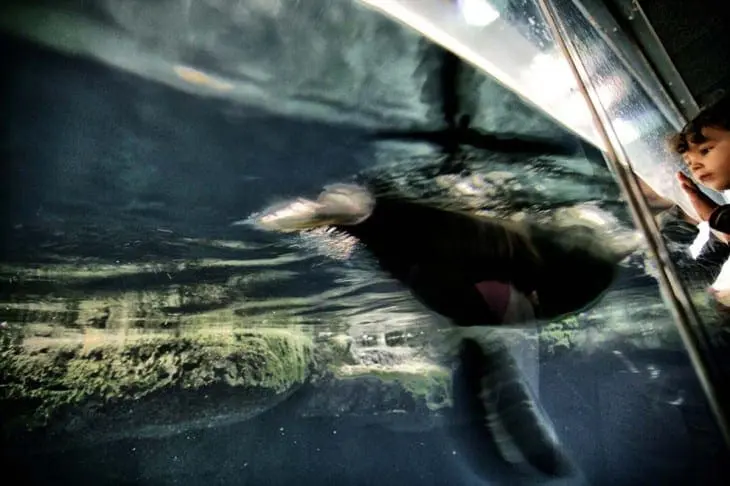Shutter Speed, Blur, Camera Shake, Subject Motion and Depth of Field. Learn to Recognize and Distinguish the difference.

Shutter Speed, Blur, Camera Shake, Subject Motion and Depth of Field. Learn to Recognize and Distinguish the difference.
text by John Bentham
The desired look of the photo: There are many times when a photographer will opt to include some blur, and/or camera shake in a photo for aesthetic reasons. Some of the photographs in the animals webinar are shot with fast shutter speed using a tripod, others are shot with slow shutter speed without a tripod. Sometimes a photographer may choose to deliberately incorporate motion blur, mixing on-camera flash, with the ambient light, and using a slow shutter speed without a tripod. Learning to hold a camera steady at 1/4 second exposure takes a bit of practice but is a very useful skill.
The subject of the photo: If a photographer is shooting any type of documentary photography, or news assignment it is very likely they are not using a tripod. This type of subject moves too quickly to use a tripod. Unless you have a relatively cooperative subject, willing to hold still long enough for you to position a tripod, you can’t follow a moving subject with a tripod. Sports photographers often use monopods, and sometimes use tripods, due to the weight of the very long lenses they use. You can’t hand-hold a 300mm lens very long and you could not hand-hold a 500mm lens successfully at all. If you are shooting in a crowded situation, or a situation where you have to move fast, from location to location, once again a tripod is a hindrance. Where a tripod really becomes essential is in landscape photography or in Macro photography. The trick to shooting good landscape photography is to keep everything in the photo sharp and in focus. To achieve this you usually need a very small aperture such as f22. To shoot with a very small aperture you must often use a relatively slow shutter speed, thus must use a tripod. Alternatively when shooting Macro photography or any type of close–up photography requiring precise focus, a tripod is very helpful.

Image © John Bentham NY DPA Photographer
The shutter speed: The safe hand-hold shutter speed, the slowest shutter speed you can hand-hold a camera steady without the photograph showing visible signs of camera shake, is 1/30th of second. This is an accepted standard. With practice in certain circumstances, using certain lenses, it is certainly possible to use a slower shutter speed and still avoid camera shake. Thus, using a tripod to shoot a photo is partly determined by the shutter speed and secondarily by the focal length and lens. If you are trying to shoot at a shutter speed slower than 1/30th you will probably see some camera shake unless you support the camera, either with a tripod or by setting the camera on a fence, or park bench etc. This becomes much more of an issue when using a long lens. If you shoot using a 18mm lens you will have fewer issues with camera shake than when using a 300mm lens. Remember, a tripod will not remove the blur caused by the subject you are photographing. That is determined by shutter speed. Even when you shoot at a relatively fast shutter speed (1/125th second), your subject will still appear blurry if they are moving quickly enough. A tripod only removes blur from the camera side of the photo. The photo above by John Bentham, DPA instructor in New York is shot without a tripod in low light at a relatively slow shutter speed. The 1/8 second shutter speed is fast enough to freeze the motionless boy in the photo but slow enough to reduce the penguin swimming past to a blur. This adds to the expression of wonder in the boys face, just what am I looking at? John has incorporated a little help from NIK Viveza Software to bring out the details in the water and add some definition to what may have appeared as murky rocks in the background.
Depth of Field: This refers to the depth from the camera position into a photograph that is in focus. IE: 10 feet from the camera or 20 feet from the camera, or 1 mile from the camera. How much of that distance that appears in focus is the depth of field. Depth of field is determined by the aperture, focal length and camera to subject distance. If you are 2 feet away from a portrait subject your background will be more out of focus (shallow depth of field) than if you are 25 feet away from a portrait subject. The smaller the aperture, say f22 VS a wide aperture of f2.8, will give you more (wider) depth of field.

Image © Frank Siteman Boston DPA Photographer
Viveza Nik Software: The photograph of an iguana by Frank Siteman, a DPA photographer in Boston is a classic shallow depth of field shot. By shooting with a longer than normal focal length (135mm), and being relatively close to his subject, combined with a wide aperture Frank has separated the iguana from the background with making it appear larger, more striking and more significant, both literally and figuratively. Frank has further enhanced the iguana photo adding a little Viveza NIK Software which makes the colors jump and the contrast more defined. Used subtly or with more extreme adjustments Viveza can make a photo appear brighter, more complex and with more punch, or you can push it all the way to an extreme technique so it appears as a vivid painting, the control and effect are yours to explore.



